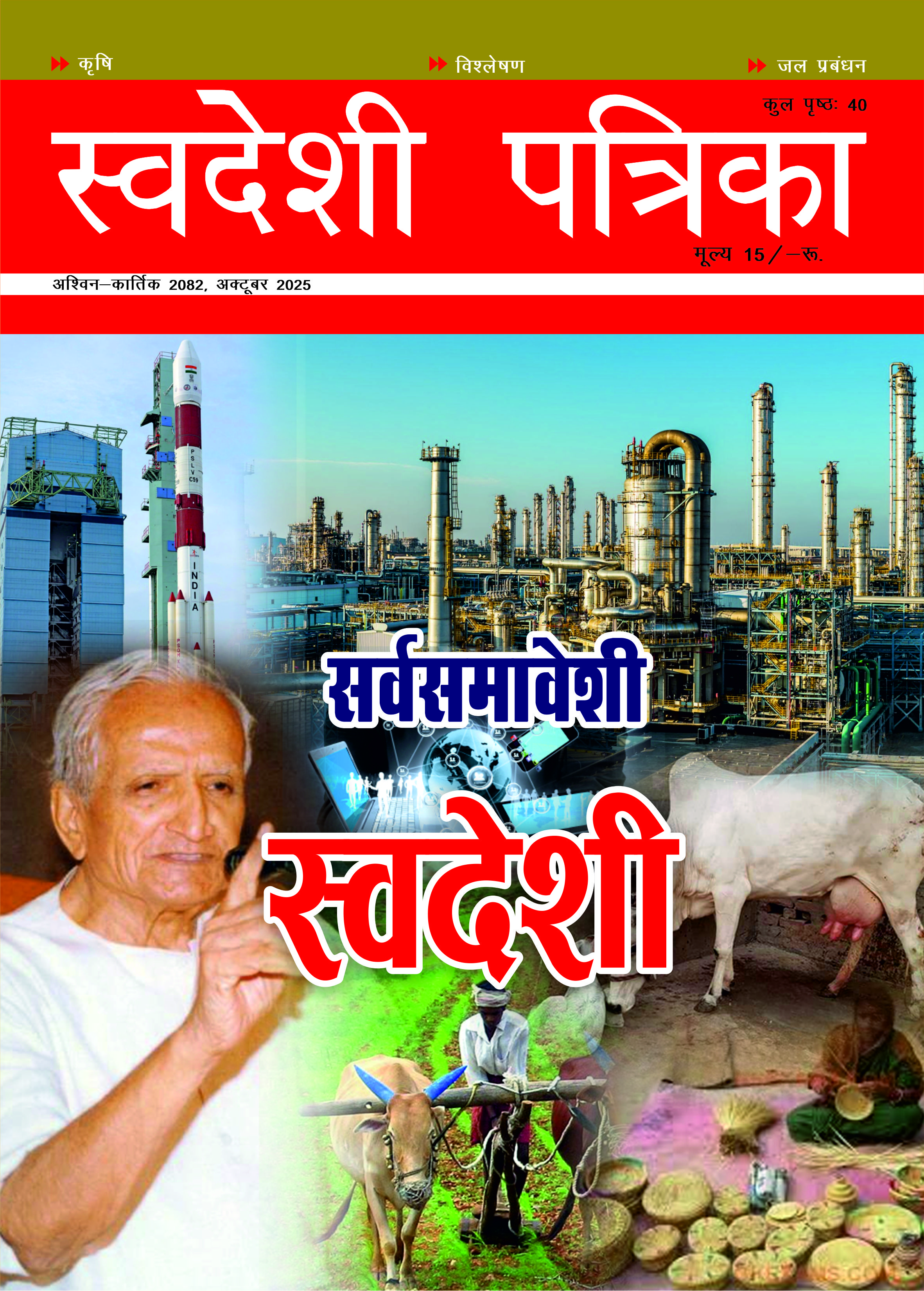
Economic Perspective of The Maha Kumbh
The Maha-Kumbh and Sanatan are not because of one or few political parties; it’s not because of one or few ideologies; it is not because of this or that government; a variety of foreign aggressors couldn’t destroy it spread over multiple years in the last thousand years. — Alok Singh
The Prayagraj is set to host the Maha Kumbh 2025, a unique event that will commence on 13 January 2025 and culminate on 26 February 2025. The Maha Kumbh defies linguistic, regional, caste, class, and even gender expression. It also transcends the boundaries of a typical mega event, assembly line event, or project management event.
The Maha Kumbh operates on a unique economic model that defies the standard input and output measures. Unlike assembly lines and project management, where goods or services can be standardized and costs and revenues forecasted, the Kumbh transcends these concepts. The twentieth-century methods of measuring work, output, and financial accounts regarding the Kumbh are still in progress. It is not an event that can be forced to follow a standard operating procedure.
The world’s manufacturers, financial leaders, and technological leaders wonder why Bharat is successful in Kumbh but not so successful in the assembly line or financial engineering domain. This spiritual asset can’t be bought by money, created by technology, or executed anywhere else by someone else. It can’t be replicated even if significant data-driven machine learning, artificial intelligence, or megastructures are engaged. Kumbh is within Santan and not without Sanatan.
Even the most advanced tools of machine learning, artificial intelligence, and the Internet of Things cannot capture the essence of the Maha Kumbh. They cannot design a model to replicate this unique event on the banks of the River Thames in London, the River Hudson in New York, or any other river in any other city. The Kumbh, along with Maha Kumbh and the Ardha Kumbh, is a treasure that we hold on the banks of the River Ganga-Yamuna-Saraswati, i.e., Triveni at Prayagraj, on the bank of River Kshipra, at Ujjain, on the bank of River Ganga at Haridwar, and on the bank of river Godavari at Nashik.
It is beyond an economic event, a social gathering event, or a family festival such as Disneyland Park. Mega events, such as sports events, the World Cup, other festivals like food festivals or literature festivals, economic forums, and others, can be organized by a single organizing committee. The composition of Kumbh is eternal. When there was no government, it was still performed. Kumbh is a performance and can’t be organized mechanically. The stakeholders, on their own, celebrate it and accomplish it. Many who participated didn’t even know the route on the days without Google Maps, without intent, and without the system of advanced bookings. The government is a facilitator, not a key player, in this spiritual performance. It had spiritual, social, and economic value then, and so it is today.
Revenue generation and Goods and Services Tax (GST) collection can be areas of interest for the government’s exchequer.
The story of temple economics is well-acknowledged. The revenue generation capability of the Kumbh can be understood by the fact that Mughal and British administrators had imposed taxes on Kumbh pilgrimages. It has been predicted by a few media houses that Ayodhya generated more GST than the National Capital Region (NCR) constituent cities of Noida and Ghaziabad in December 2024 for Uttar Pradesh. The GST monthly data is published state-wise in the public domain. City-wise data is usually not available in the public domain. The GST collection at Prayagraj Maha Kumbh of 2025 will surprise all.
The volume of jobs it creates, the value of culture and consumption it preserves, and the multiplier effect on various sectors of the contemporary world like mobility, hospitality, utilities, internet, furnishes, food, music, television, and many more is a problematic assignment to compute. Mobility, including road, rail, water, and air, and the hospitality sector, including hotels, tents, cottages, dormitories, and others, are already seeing a massive surge in passenger and customer volume and prices.
The visitors are pilgrims first and later anything else like passengers and customers. The food and water sector, like restaurants, roadside eateries, langar, and even the business of packaged food industry, keeps an eye on this Kumbh. It is originally a spiritual journey though the contemporary western world and their indigenous supporters might treat it as an opportunity to milk revenue. It reflects that all our religious and spiritual practices have an economic domain.
This Kumbh is witnessing a fullhouse in the first week for the remaining one and a half months. Uttar Pradesh’s state gross domestic product (SGDP) might place it in an advantageous position in this financial year itself.
A few years ago, the general perception was that the religious pilgrims were for the middle and lower class. However, there is active participation by the aviation industry, luxury cottages, and curious tents on offer, as well as the involvement of the world’s whose and who tells a different story. The high-end offers are fully booked, whether for aviation tickets or luxury, and even comfortable accommodation at Prayagraj. The regular hotels near the Praygraj Junction have also raised their price more than four to ten times for this Maha Kumbh, and despite that, they are complete with advanced bookings for the whole of the Kumbh days.
The sants, aghoris, advaityas, sadhus, akharas, kalpawasis, individuals, families, extended families, and any other label, or any other group, all are witnessing a divine at Praygaraj this Kumbh.
The facilitator state government has invested 7000 crores to establish a tent city of 4000 hectares for one and a half months. The projection of 45 crore pilgrims visiting Maha Kumbh in 45 days is set to contribute 4 lakh crores to the GDP of Uttar Pradesh. If the number of pilgrims rises to 80 crore, the GDP should also see a matching rise. These forecasts are based on the Ardh-Kumbh that happened in Prayagraj in 2019. The measuring scale of GDP is restricted to the organized sector, and GST collection is a proxy for this measurement. The UPI transaction is another proxy to realize the transactions happening from Maha Kumbh to Prayagraj and extrapolate the GDP effects to Ayodhya and Kashi.
Many unmeasurable and unorganized, as well as secret donations (secret donations are prioritized in Sanatan; Gupt-Dan is Maha-Dan) contribute directly, indirectly, long-term, medium-term, and short-term to the success of Kumbh and growth story and the state’s GDP. Whatever, the Kumbh is always a success.
Measuring the exact monetary output of Maha-Kumbh is beyond the scope of any economic-statistical framework. The social awareness that leads to higher participation of the upper class in Maha-Kumbh is due to the government’s efforts to support infrastructure like mobility and hospitality, and its cascading effects benefit the lower class and local class. This arrangement is a win-win situation for all. The upper class, which earlier faced troubles, whatever the reason, is the most satisfied group in this Maha-Kumbh. The struggling class always prioritized their roots irrespective of whether the government did or didn’t do their task.
The Maha-Kumbh and Sanatan are not because of one or few political parties; it’s not because of one or few ideologies; it is not because of this or that government; a variety of foreign aggressors couldn’t destroy it spread over multiple years in the last thousand years.
It reflects our commitment to “Swavalamban,” “Swadeshi,” and greater “Swa.”
(Alok Singh has a doctorate in management from the Indian Institute of Management Indore and promoter of Transition Research Consultancy for Policy and Management.)


